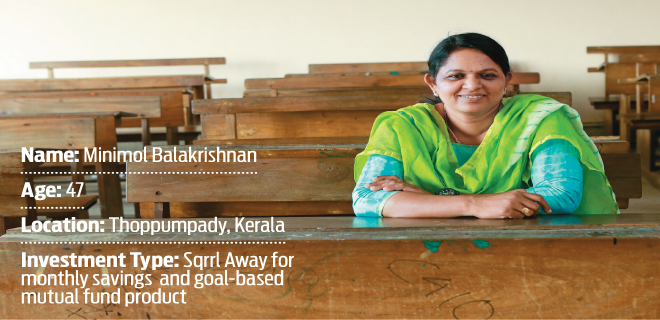Advantage flexibility
Corporate India sees the benefits of adopting flexible work models

Neha Mathur is a CA and spends her day helping customers file their taxes, plan their portfolio investments and finish the legal paperwork. A bright young woman, with two kids and a large joint family, Neha manages her responsibility with ease and professional efficiency. She logs into her system at 9am and is at work till 5pm. In between she takes an hour long break for lunch and checks on her kids. Neha is one of the many work-from-home CA s employed by Cleartax.in—a platform that helps people file their taxes online.
Archit Gupta, a young entrepreneur, a computer engineer with a degree from Wisconsin, gave up a Silicon Valley job to come back and set up Cleartax.in. Very inspired by the technology-backed, result-only work environment and influenced by the Valley culture of quality, Gupta was clear that he wanted to build a lean, efficient, high-ontalent organisation. That move promoted him to build the entire customer support and query side of business as a remote piece. Most of these associates are women who are CA s and sales agents working from home, who have a clear KRA and a process that supports them.
Archit is clear that the value this brings to his business is unique— they attract top talent, where, otherwise, younger, inexperienced folks would be working for them; they save on costs and build a lean result-oriented culture. But coders, engineers and hackers who work on the tech product pretty much live in office and are constantly collaborating.
Another entrepreneur, Pranay Srinivasan, who founded Sourceeasy.com—an international platform for apparel manufacturing, is building a distributed company, with models of flexible work as well as remote built-in. Pranay's teams are across India, China and US, straddling time zones and working on common goals of scaling their startup. Talent, efficiency and transparency are key drivers of this decision.
There are several factors driving the adoption of flexible work models and use of remote professionals in core business models. Take the case of Monica Jasuja, a senior executive with a large financial firm; she straddles her time between office and working from home, in order to keep up with the demands of work and ensuring efficiency in schedules. Long commutes are a time killer; she instead focuses on working from home. The only reason for her to work from home is to give more to work. A top performer and a mover into the CXO ranks, Monica is one of the many professionals, creating their own versions of work-life design.
Companies realise the resonance value of finding work-life fits. Many are investing in flexible work models while others are beginning to take note and acknowledge the value of flexibility. The key driver remains more women in workforce, better quality of talent and return on investment efficiency.
Take MakeMyTrip's Holiday Expert programme, which has over 1,000 women working in it, who sell company's holiday packages working from home and are typically experienced professionals who quit 9 to 9 corporate jobs to find their balance. The programme is core to the company's P&L and is CEO Deep Kalra's pet project.
It is time companies took note of some facts. India has the largest number of women graduates in the world, often better performers at work and academics. More than 48 per cent of them take career breaks, and many never come back. Corporate India has only 5 per cent women in leadership and about 17 per cent overall workforce participation numbers, leaving a lot of room for improvement.
The trend to build business models and units keeping flexibility in mind is benefitting women the most. There are various formats besides the wildly popular workfrom- home. Women are setting up single person companies, taking on more freelance work, negotiating for more flex—as part time or distributed office time arrangements. The trend is benefitting workplaces to become more gender equal and also creating more room for family friendly workplaces. Increasingly, the conversation has opened up for men to create their own versions of success. Work-from-home jobs and flexible jobs are the fastest growing search queries on Google.
But all is not rosy as companies look beyond the industrial mindsets and formats. Managerial resistance and lack of processes, clear deliverables and average skill sets are deal breakers. Traditional companies focus on methods more than results and that is where unbridled facetime and long office hours take over. Most work environments are designed for actions versus results. Being able to define what results look like and whether they can be delivered with individual efforts matter, when making workflex a key component in an organisation.

Here are the key factors when adopting flexible work models:
Connectivity:
Infrastructure and remote collaboration tools are key in making workflex a success.
Whether it means companies using remote working tools or individuals investing in basic broadband connectivity, success of a remote worker lies in being able to stay connected.
Communication:
Remote or flex workers tend to fall off because 'out of sight, it out of mind'. They also miss out on water cooler chatter, tacit workplace changes and peer bonding. Companies are still putting channels in place and communication is a key onus on the worker, most of the time.
Conversation:
Families in India still think that the person who works from home is always available all the time and this could hamper your work. Having a conversation with family and setting their expectations on the work commitment one needs is significant in making the workfrom- home model a success.
Career:
Workflex is great but not forever. It also need not be the only career choice. On-ramp and off0-ramp are part of the new career maze and professionals realise the need to shift gears at various stages of their career. A young mother with kids is likely to go back to work in a full office mode, once the kids are a little more independent. A professional with a creative need might be more productive in a non-cubicle environment.
Cost Benefit: A lot of technology and digital businesses are built on the lean, cosmopolitan work culture and find the return on investment with remote and flexible models higher than the traditional high real estate cost models. There is a global move with companies such as Wordpress being all virtual and models like Uber andAirbnb creating shareholder value minus the industrial frills.
For individuals, the trade-off is having a better quality of life and staying connected to their careers at the same time. There are some who find their mojo without the need to spend 12 hours a day in office environments. But one has to remeber that flexible work is not for all. It works in certain cases and stages. For teams with a high need to collaborate in fast changing environments, work is a lingering series of constant changes, modularity of work is sacrificed and rightly so.
It also does not work in rigid managerial silos, where top down is the order of things. A business case and adoption of newer models, processes and the changing workforce demographics is key to making models of work from home and flexible work a success.









